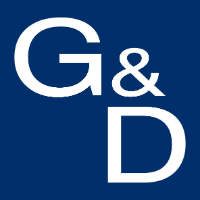Guntermann and Drunck (G&D), debutant at this year’s ATC in Amsterdam but a well-known manufacturer of high-end KVM solutions, was noticed by many visitors and delegates at the show.
G&D showed its complete product range from KVM switches and matrix switches to KVM extenders. The highlights of the live product presentations at G&D’s booth in hall 11 were the KVM extender systems specially designed for the demanding applications in the ATC environment. G&D’s 25 years of experience in transmitting and switching computer signals resulted in a set of products being well-recognised by ANSPs and system intergrators.
Different variants multiply possibilities and G&D offers KVM extenders for DVI and VGA video and accompanying computer signals for transmission over CAT cable as well as fibre-optics. The latest products in this range are:
- DVIVision
- FIBREVision
- DualLink-Extender
- DL-Vision
DVIVision transmits digital video (single-link DVI), keyboard/mouse, audio and RS232 signals using CAT cables over distances up to 140m. Therefore it allows resolutions up to 1920px x 1200px at 60Hz.
FIBREVision accomplishes the same by using fibre-optics instead. Depending on the cable it bridges a distance of 550m (multimode fibre) or 10,000m (singlemode fibre). Both products are also available as a multichannnel variant (two or more video transmissions within one device).
In terms of dual-link DVI solutions and safety for ATC, if it comes to higher resolutions such as 2048px x 2048px, which are required (by BARCO’s ISIS monitors, for example), G&D’s dual-link DVI extender line will be suitable.
Both the DualLink-Extender and the DL-Vision are capable of resolutions up to 2560px x 1600px at 60Hz with a colour depth of 24bit. The main difference between the DualLink-Extender and the DL-Vision is that, in addition to the DVI signal, DL-Vision also transmits USB and PS/2 keyboard/mouse audio as well as RS232, whereas the DualLink-Extender exclusively transmits DVI and USB or PS/2 keyboard/mouse.
DL-Vision-MC2 transmits 2 x 2560px x 1600px at 60Hz and the accompanying computer signals via four fibres. Each resolution within a bandwidth of 330MHz is transmitted without loss from point to point. That means there is no disturbance such as frame-dropping or content loss regarding image quality.
The redundant, self-controlling power supplies ensure the operational safety of the device.
But the greatest difference to other products on the market is the networking ability of the DL-Vision devices, something that one of the prospects at the show said “we have been waiting for for a long time”. Not only for updating/restoring of system configuration or firmware but also for monitoring and active reporting, the dual network connectivity was designed by G&D’s engineering staff. As safety is paramount in ATC applications, the administrator gains online system status information on demand or by the system itself in the form of SNMP messages via network.
Control and configuration are clearly arranged. A possible device breakdown can be detected in advance and support can be given without any down-time for the ATCo. To achieve that all DL-Visions can be connected to the DevCon-centre. This “device condition centre” can be linked to two networks, the productive one and the separate service LAN. This saves IP addresses in the productive LAN and enables the user to see all KVM devices under one IP address.
The DevCon-centre has an integrated web server that shows all the information within a convenient graphical user interface. This way the administrator in charge can monitor the system’s condition independently from his or her location. Besides monitoring the connected devices, the web interface is also used for configuration. Each extender and console can be named and configured via the user interface.
All extenders are shown in a tree structure and classified in different sections. The default folder (critical extenders) indicates all extenders that are out of a certain setpoint. It therefore allows quick and targeted access to the devices. The status bar on the bottom of the window shows an alert message when any setpoint is undercut.

